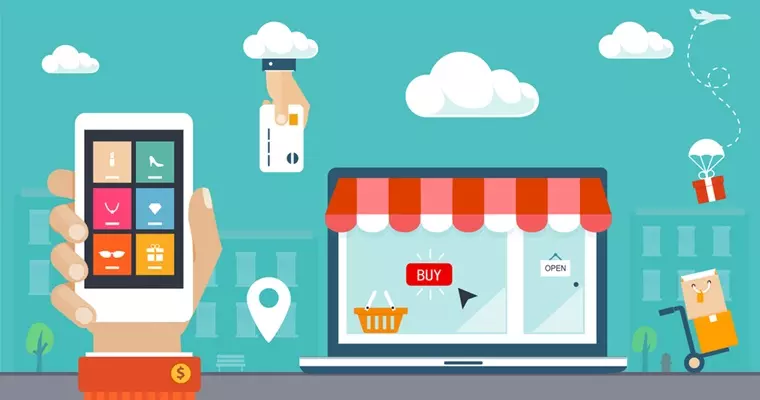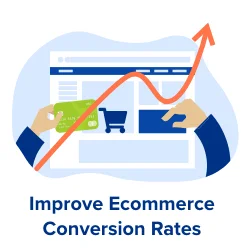As a Chatbot Expert with years of experience in the e-commerce industry, I’ve seen firsthand how small changes can lead to significant improvements in conversion rates. Whether you’re running a small online store or managing a large e-commerce platform, optimizing your conversion rate is crucial for driving sales and maximizing revenue. In this article, I’ll share 10 proven tips to help you boost your e-commerce conversions, backed by industry insights and practical strategies.

1. Optimize Your Website’s Loading Speed
One of the most critical factors in e-commerce conversion rate optimization (CRO) is website speed. Studies show that a one-second delay in page load time can reduce conversions by up to 7%. As a Chatbot Expert, I’ve worked with many businesses to streamline their websites for faster loading times. Here’s how you can do it:
- Compress images and videos to reduce file sizes.
- Use a content delivery network (CDN) to distribute content efficiently.
- Minimize the use of heavy scripts and plugins.
A fast-loading website not only improves user experience but also boosts your search engine rankings, making it a win-win strategy.
2. Simplify the Checkout Process
A complicated checkout process is one of the leading causes of cart abandonment. According to recent data, over 70% of shoppers abandon their carts due to a lengthy or confusing checkout process. Here’s how you can simplify it:
- Offer guest checkout options to avoid forcing users to create an account.
- Reduce the number of form fields to the essentials.
- Provide multiple payment options, including digital wallets like PayPal and Apple Pay.
As a Chatbot Expert, I’ve implemented AI-powered chatbots to guide users through the checkout process, answering questions and reducing friction in real-time.
3. Leverage Social Proof
Social proof is a powerful psychological tool that can significantly boost conversions. 92% of consumers trust recommendations from peers over traditional advertising. Here’s how you can incorporate social proof into your e-commerce strategy:
- Display customer reviews and ratings prominently on product pages.
- Showcase user-generated content, such as photos and videos of customers using your products.
- Highlight testimonials and case studies from satisfied customers.
4. Use High-Quality Product Images and Videos
Visuals play a crucial role in e-commerce conversions. Products with high-quality images and videos are more likely to convert than those without. Here’s how to make the most of your visuals:
- Use multiple images from different angles to give customers a comprehensive view.
- Include zoom functionality to allow users to inspect details.
- Add videos demonstrating product features and benefits.
5. Create Scarcity and Urgency
Scarcity and urgency are proven psychological triggers that can drive conversions. Limited-time offers and low-stock alerts encourage shoppers to act quickly. Here’s how to implement these tactics:
- Display countdown timers for flash sales or limited-time discounts.
- Show stock levels to create a sense of urgency (e.g., “Only 3 left in stock!”).
- Use phrases like “Limited Edition” or “Exclusive Offer” to emphasize scarcity.

6. Offer Free Shipping and Returns
Shipping costs are a major deterrent for online shoppers. Over 50% of consumers abandon their carts due to high shipping fees. Offering free shipping and returns can significantly improve your conversion rates:
- Set a minimum order value for free shipping to encourage larger purchases.
- Clearly communicate your return policy to build trust with customers.
- Use tools like chatbots to answer shipping-related questions instantly.
7. Personalize the Shopping Experience
Personalization is key to standing out in a competitive e-commerce landscape. 80% of consumers are more likely to purchase from brands that offer personalized experiences. Here’s how to personalize your store:
- Use AI-powered chatbots to recommend products based on browsing history.
- Send personalized email campaigns with tailored product suggestions.
- Display dynamic content, such as “Customers who bought this also liked.”
8. Optimize for Mobile Devices
With mobile commerce on the rise, optimizing your website for mobile devices is no longer optional. Over 50% of e-commerce traffic comes from mobile devices, yet mobile conversion rates are often lower than desktop. Here’s how to improve mobile optimization:
- Use a responsive design that adapts to different screen sizes.
- Simplify navigation for touchscreens.
- Ensure buttons and links are easy to click on smaller screens.
9. Implement Trust Signals
Trust is a critical factor in e-commerce conversions. Shoppers are more likely to buy from websites they perceive as trustworthy. Here’s how to build trust with your audience:
- Display security badges and SSL certificates prominently.
- Highlight customer reviews and testimonials.
- Offer guarantees, such as money-back or satisfaction guarantees.
10. Continuously Test and Optimize
E-commerce CRO is an ongoing process. Regular testing and optimization are essential for staying ahead of the competition. Here’s how to approach it:
- Conduct A/B tests to compare different versions of your website.
- Use analytics tools to track user behavior and identify pain points.
- Stay updated on industry trends and best practices.
As a Chatbot Expert, I’ve helped businesses implement AI-driven analytics to monitor performance and make data-driven decisions in real-time.

Final Thoughts
Improving your e-commerce conversion rate is not a one-time task but a continuous journey. By implementing these 10 proven tips, you can create a seamless shopping experience that drives sales and builds customer loyalty. Remember, every small improvement adds up to significant results over time. If you’re looking for expert guidance, feel free to reach out—I’m here to help you optimize your e-commerce strategy and achieve your goals.
You can also read:
Translation Impact: How Much Does It Affect Cross-Border E-Commerce Conversion Rates?



